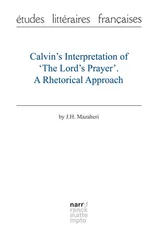Helge Fauskanger - J.R.R. Tolkien’s Lord’s prayer and Hail Mary in Quenya - Syntactical and Etymological Analysis
Здесь есть возможность читать онлайн «Helge Fauskanger - J.R.R. Tolkien’s Lord’s prayer and Hail Mary in Quenya - Syntactical and Etymological Analysis» весь текст электронной книги совершенно бесплатно (целиком полную версию без сокращений). В некоторых случаях можно слушать аудио, скачать через торрент в формате fb2 и присутствует краткое содержание. Жанр: Языкознание, на английском языке. Описание произведения, (предисловие) а так же отзывы посетителей доступны на портале библиотеки ЛибКат.
- Название:J.R.R. Tolkien’s Lord’s prayer and Hail Mary in Quenya: Syntactical and Etymological Analysis
- Автор:
- Жанр:
- Год:неизвестен
- ISBN:нет данных
- Рейтинг книги:5 / 5. Голосов: 1
-
Избранное:Добавить в избранное
- Отзывы:
-
Ваша оценка:
- 100
- 1
- 2
- 3
- 4
- 5
J.R.R. Tolkien’s Lord’s prayer and Hail Mary in Quenya: Syntactical and Etymological Analysis: краткое содержание, описание и аннотация
Предлагаем к чтению аннотацию, описание, краткое содержание или предисловие (зависит от того, что написал сам автор книги «J.R.R. Tolkien’s Lord’s prayer and Hail Mary in Quenya: Syntactical and Etymological Analysis»). Если вы не нашли необходимую информацию о книге — напишите в комментариях, мы постараемся отыскать её.
J.R.R. Tolkien’s Lord’s prayer and Hail Mary in Quenya: Syntactical and Etymological Analysis — читать онлайн бесплатно полную книгу (весь текст) целиком
Ниже представлен текст книги, разбитый по страницам. Система сохранения места последней прочитанной страницы, позволяет с удобством читать онлайн бесплатно книгу «J.R.R. Tolkien’s Lord’s prayer and Hail Mary in Quenya: Syntactical and Etymological Analysis», без необходимости каждый раз заново искать на чём Вы остановились. Поставьте закладку, и сможете в любой момент перейти на страницу, на которой закончили чтение.
Интервал:
Закладка:
News about pronouns would be very welcome in Tolkienian linguistics, since parts of the Quenya pronoun table remain rather obscure. We can now remove the asterisk from emmeas the emphatic pronoun for exclusive we , as well as from the related ending - mmafor exclusive our . These forms had already been deduced, but tienas the dative pronoun to/for them is unexpected; yet it seems to confirm that te them represents * tai( tienitself evolving from * taien, according to this theory).
It is interesting to observe that the prefix et- forth , out is expanded to ete- where an impossible consonant cluster would otherwise arise, as in etelehta- free , release , let out . I have sometimes wondered how et- could be combined with a word like lelya- go (WJ:362), since * etlelya- is not a possible Quenya word. While I actually pondered the possibility of a form ** eltelya- with metathesis, it would seem that go out (or go forth ) should rather be * etelelya-.
The verb úcar- sin is valuable not only because it fills a gap in our vocabulary, but also because it provides an example of the negative prefix ú- used on a verb: it conveys the idea of something wrong or bad ( car- do > ú-car- do wrong , sin ). Some, like Nancy Martsch in her primer Basic Quenya , have assumed that ú- prefixed to verbs is used as a negation not . To be sure, this idea was not without any foundation; we know that ú- is used like this in Sindarin (as in Gilraen’s linnod in LotR, Appendix A: ú-chebin estel anim I have kept no hope for myself or literally * I do not keep hope for me , the verb * hebin[here lenited chebin] apparently meaning * I keep ). Indeed we have a Quenya attestation of ú- as a negation prefix in Fíriel’s Song, which seems to have úyeas a negated form of ye is (LR:72: úye sére indo-ninya my heart resteth not , more literally my heart is not resting ?) However, Fíriel’s Song is not quite LotR-style Quenya, and the fact that the verb úcar- means sin , do wrong rather than not do (cf. car- do ) seems to indicate that we should avoid using ú- as a negation prefix on verbs. (It is, however, so used in the case of adjectives, cf. únótimë numberless or literally uncountable in Namárië.) If we want to negate verbs, other devices must be sought; the most straightforward solution would be to simply use the independent word lá not (LR:367 s.v. la-). This word is here attested as part of the negative command # ála do not .
The texts also provide new insights on Quenya grammar and syntax. It is interesting to notice how the imperative of a "basic" verb like # hyam- pray is constructed: the verb receives the ending - e(reflecting the ending of an i-stem: hyame= * hyami-), and the imperative particle áis placed in front of it to produce á hyame= pray! The system so far used by many writers (including me) is to construct the imperative of such verbs simply by adding the ending - a. This was in accordance with the examples ela! see! behold! and heka! be gone! from WJ:362, 364. It still seems possible that pray! could simply be * hyama!However, the construction with áplus stem in - eis perhaps to be preferred. It may be that Tolkien intended ela!and heka!as old, fossilized forms. After all, the same essay that provides ela!also exemplifies the negated form of the same imperative construction (in the phrase áva kare don’t do [it]! in WJ:371; this would correspond to a positive command * á kare do [it]! ). In the case of the example á vala rule (WJ:404, not ** á vale), we must assume that vala- is itself an A-stem and therefore does not take the ending - e(e.g. third person aorist valarather than ** vale). The imperative of a "basic" verb like tir- watch should be * á tirerather than ** á tira, though a shorter imperative * tira!paralleling ela!and heka!is perhaps equally possible.
These texts also reveal another thing about Quenya imperative constructions: The imperative particle ácan receive pronominal suffixes denoting the object of the sentence (direct object in accusative or indirect object in dative), as in áme etelehta deliver us , ámen anta…massamma give (to) us…our bread ("us" being denoted by the suffix #- me, #- men). The same goes for the negated form of the imperative particle, # ála(as in ála me tulya, do not lead us ). Presumably Tolkien’s later variant of the word for don’t , áva, could also receive pronominal endings denoting the object of the prohibition.
Another piece of news about the behavior of pronominal suffixes is that even finite verbs can receive a pronominal ending, denoting an object, that does not have to be preceded by another ending denoting the subject ( apsenet [we] forgive them ). The recently-published example karita s to do it (VT41:13, 17) demonstrated that infinitives can receive object endings, and this can now be seen to be true of finite verbs as well. In all previous examples of verbs incorporating a pronominal ending denoting the object, it is preceded by another pronominal suffix denoting the subject (e.g. one word from the Cormallen praise: laituvalmet we [- lme-] shall bless them [- t]). Writers who choose to append pronominal endings to verbs should make sure that there can be no confusion as to whether the ending denotes the subject or the object; otherwise separate pronouns (rather than endings) should be employed.
The phrase quanta Eruanno full of grace represents a hitherto unknown use of the genitive. It could surely be used in more mundane contexts as well, e.g. * yulma quanta neno, a cup full of water ( nén, nen-). The underlying idea is probably the use of the genitive in the sense "concerning" (as in Quenta Silmarillion the Story of [= about, regarding, concerning] the Silmarils ). So perhaps quanta Eruanno= full regarding grace , * quanta neno= full as far as water is concerned . It would be interesting to know if the genitive case can also be used adverbially in connection with the related verb quat- fill (WJ:392), so that a sentence like "the Elf filled the cup with mead [ miruvórë ]" could be expressed as * i Elda quantë i yulma miruvórëo– the genitive indicating the substance used to "fill" the direct object. (If this is not the case, the instrumental would probably be used instead: * miruvórenen.) It is even possible that the genitive can be used, not only with quanta full , but also with its antonym lusta empty , e.g. * lusta neno empty of water .
Читать дальшеИнтервал:
Закладка:
Похожие книги на «J.R.R. Tolkien’s Lord’s prayer and Hail Mary in Quenya: Syntactical and Etymological Analysis»
Представляем Вашему вниманию похожие книги на «J.R.R. Tolkien’s Lord’s prayer and Hail Mary in Quenya: Syntactical and Etymological Analysis» списком для выбора. Мы отобрали схожую по названию и смыслу литературу в надежде предоставить читателям больше вариантов отыскать новые, интересные, ещё непрочитанные произведения.
Обсуждение, отзывы о книге «J.R.R. Tolkien’s Lord’s prayer and Hail Mary in Quenya: Syntactical and Etymological Analysis» и просто собственные мнения читателей. Оставьте ваши комментарии, напишите, что Вы думаете о произведении, его смысле или главных героях. Укажите что конкретно понравилось, а что нет, и почему Вы так считаете.












